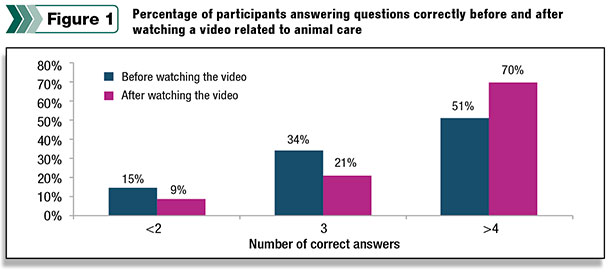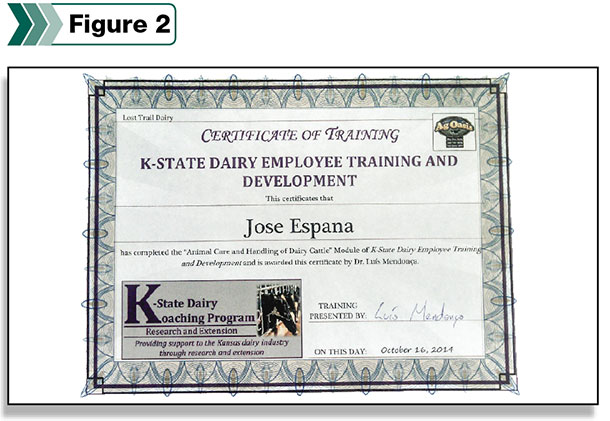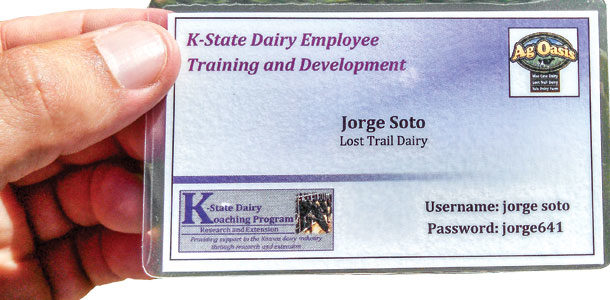Employees’ job performance has an impact on the overall profitability of a dairy operation, regardless of the dairy’s size. Efficiency in a dairy farm (from milk production to pregnancy rates) is partly a reflection of how well employees perform their daily tasks.Thus, conducting training sessions to teach dairy workers about their work should be considered a high priority in a dairy farm.
Training sessions are necessary to reinforce important messages and ensure workers are performing their work as expected, thereby minimizing losses. Explaining the rationale behind each task performed is a key component of training programs, helping to expand employees’ knowledge and giving importance to the tasks performed.
Courses should include multiple topics that encompass various areas of the dairy farm operation. Broad topics involving animal welfare and worker safety could be addressed in courses for all employees, while highly specialized courses can be delivered to specific employees depending on their responsibilities.
Unfortunately, conducting training sessions demands time, effort and resources that may not be readily available. Organizing training sessions is already problematic considering the long days and busy schedules of dairy producers and managers.
In addition, if the producer’s goal is to implement frequent training sessions, keeping track of past training courses is necessary, which may be troublesome. Besides keeping track of material covered in previous trainings, managers will want to track employee records of who attended trainings and when trainings were conducted.
Kansas State University Research and Extension created a web tool designed to help dairy producers who want to implement and track training programs for their employees. This tool focuses on the topic of animal welfare, based on the request of dairy managers. This is a pilot project that it is being offered to producers from Kansas and adjacent states.
K-State Dairy Employee Training and Development Program
The goal of the K-State Dairy Employee Training and Development Program is to train dairy workers using an open-source learning management system that allows for the integration of multiple information sources. To date, this tool has been used to deliver training on basic animal welfare and handling, as well as worker safety when handling animals.
How does it work?
The worker is provided with an individual-specific username and password to access the K-State Dairy Employee Training and Development Program.
A laminated card with this information is provided to each employee attending the training. In the accompanying photo is an example of a card provided to a participant of this program to have access to the web tool.
Workers are then able to access specific educational materials related to their responsibilities. A database detailing employee training is available to managers. This tool allows producers to determine past training sessions, keep track of employee training records and monitor workers’ knowledge.
Example of how this tool has been used
Training sessions were organized by Dr. Ron Fehn, veterinarian and nutritionist, AgOasis and myself. Eighty workers from four dairies were enrolled in the on-farm training. Employees were trained in small groups of six or less to avoid disruption of the workday. Sessions lasted approximately 30 minutes. Using their username and password, employees accessed K-State Dairy Employee Training and Development web tool via laptops owned by the dairies.
Five questions about animal behavior and handling were used as a pre-test measure to determine existing knowledge level before watching a 15-minute video about animal care, behavior and handling. The same questions were asked after employees watched the video as a post-test measure.
Managers from the dairies and I re-emphasized important aspects of animal care and handling before ending the training session. Individuals who were not employed by those dairies but handled cows on a daily basis (e.g., breeders) were also trained. A separate training session tailored for breeders from ABS Global was conducted after training employees from the dairies.
A minimum criterion level of correct answers was established to help ensure maximum safety for employees and animals, as well as animal well-being at the dairy farms. Employees that answered three questions incorrectly after watching the video were re-trained to guarantee employees understood the importance of appropriate practices of animal care and handling.
Before watching the video, 51 percent of employees answered four or more questions correctly; after watching the video, 70 percent of employees answered four or more questions correctly, demonstrating a 37 percent improvement in knowledge (Figure 1).

The improvement in knowledge was consistent across dairy farms, ranging from 32 percent to 44 percent. As part of the K-State Dairy Employee Training and Development Program, employees were given certificates for attending the training session (Figure 2).

This program is an example how we can expand workers’ knowledge about animal behavior and handling. Knowledgeable employees, especially in the area of animal welfare, help dairy operations become more efficient and ensure animals are being handled according to animal welfare standards. Furthermore, programs that focus on educating employees may help build consumer trust in our production practices.
Although the K-State Dairy Employee Training and Development Program successfully improved knowledge of dairy workers, approximately 45 percent of workers needed help with basic computer and reading skills. Because of these deficiencies, it is likely that employees retained more information during training than we were able to capture by the knowledge assessment questions.
Videos, narrated PowerPoint presentations, protocols, etc., can be uploaded in the open-source platform that K-State Research and Extension is using to train dairy employees. This free resource helps producers, managers, veterinarians and nutritionists deliver trainings to employees by uploading resources tailored to the dairy’s specific individual needs.
Furthermore, it can be used as an online tool to keep employee training records, thereby ensuring a high and consistent level of knowledge at each dairy. The K-State Dairy Employee Training and Development Program is an online resource dairy producers from Kansas and adjacent states can use for continuing education of dairy workers while keeping track of employee records.
The K-State Dairy Employee Training and Development Program is currently a pilot project; thus, it is not available to all dairy producers in the U.S. Our goal is to have a successful program regionally, which can fulfill employee training needs, before expanding to other regions. Nevertheless, other resources similar to the tool described above are currently available for producers from any state interested in training their employees.
The Animal Care Training program and DairyCare365 are resources dairy producers can use to train their employees in the topic of animal care handling.
Regardless of the tool chosen to train employees, it is crucial to recognize that people being trained may need assistance when using technology. Hence, if a producer plans to use technology in training programs, an individual should be responsible to ensure employees are being trained as expected.
Ultimately, education of workers can increase job performance, improve profitability and increase consumer trust by demonstrating commitment to quality animal care. PD
PHOTO
Training sessions are necessary to reinforce important messages and ensure workers are performing their work as expected, thereby minimizing losses. Photo courtesy of Luis Mendonca.

Luís Mendonça
Assistant Professor
Extension Specialist– Dairy
Kansas State University







